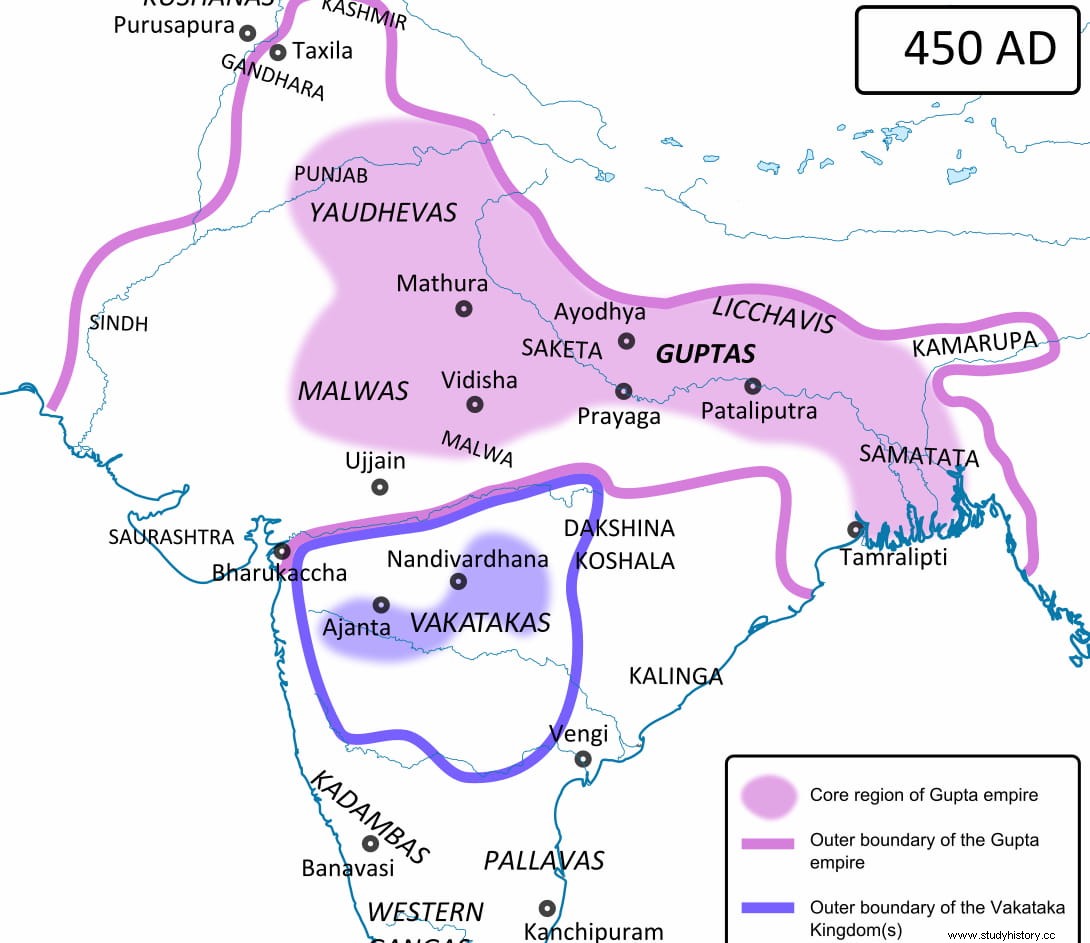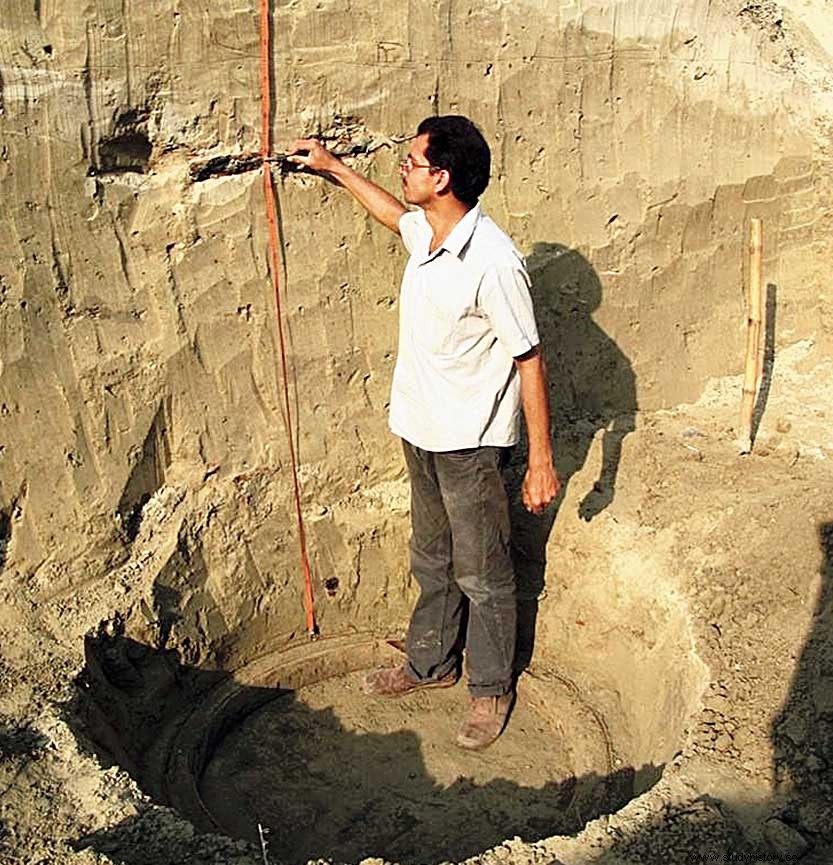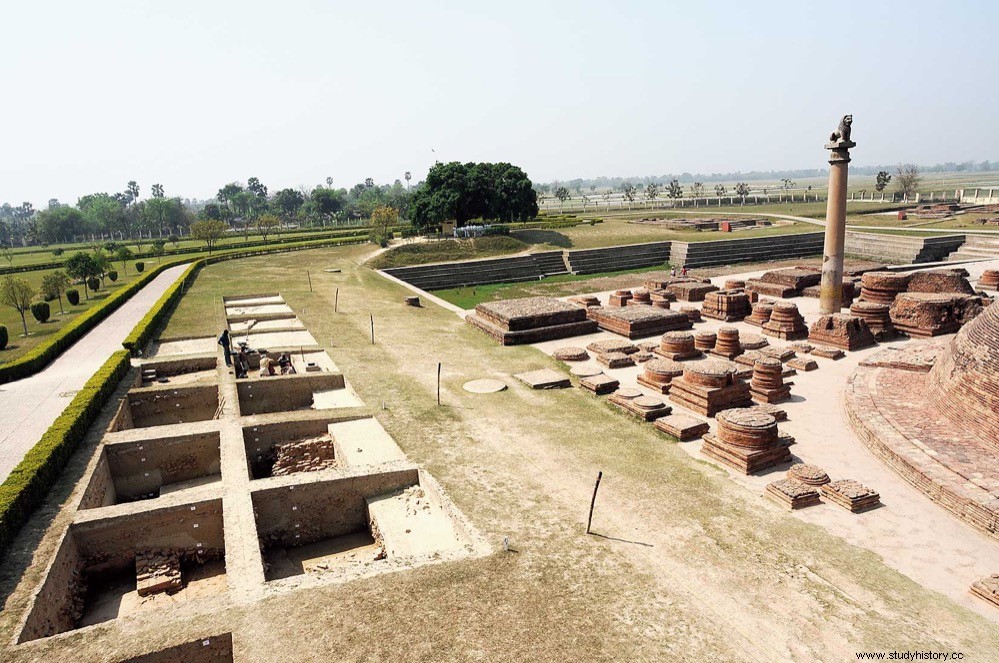The Gupta Empire was one of the largest empires in the history of India. Between the years 320 and 550 AD. It dominated the entire northern part of the subcontinent, as well as present-day Pakistan and Bangladesh.
The Gupta dynasty ushered in cultural and scientific development, as well as a long period of peace and prosperity, which came to an abrupt end in the mid-6th century.
Around the year 500 the Hephthalites, the White Huns, invaded the empire from the north. Although they could be diverted to southern India in 528, the damage caused resulted in an economic and social decline that led to the final disintegration of the empire. Or at least that's what was thought until now.

According to archaeologist Shanker Sharma of the Archaeological Survey of India, who recently surveyed all major archaeological sites in Bihar and eastern Uttar Pradesh, they all show silt deposits between 0.6 and 2.5 meters thick, which suggests that these areas of the Gupta Empire were affected by large and disastrous floods.
Sharma presented his findings at an international conference organized by the Ludwig Maximilian University of Munich in Delhi in early February. All the studied deposits are located in the center of the floodplains of the Ganges.

One of the sites, Balirajgarh in Madhubani district, had a fortification with 7-meter-high walls. According to Sharma, the silt managed to overcome that height and enter the settlement above the walls, depositing a 1.7-meter layer of mud inside. Imagine how big the floods would have been to cause that, and what will have happened to the settlements that lacked walls Sharma indicated.
At other sites such as the Kolhua stupa site in Vaishali, or the Panr site in Samastipur, silt deposits vary between 1 and 2.5 meters. He also found that all those places show an absence of subsequent occupation of several centuries.
The floods dealt a death blow to the Gupta Empire, but also caused a decline in Buddhism:Kolhua monastery was found buried under a thick layer of silt, and the surviving Buddhist monasteries that relied on the vanished villages also declined rapidly . The Chinese monk Hiuen Tsang, who visited the area around 630 AD. told in his diary that he found the monasteries of Pataliputra, Rajgir, Vaishali and Kesaria deserted:

Although historians such as Vijay Kant Thakur previously pointed out the theory that one of the possible causes of the fall of the Gupta Empire could be floods and other adverse bioclimatic phenomena, now the evidence that confirms these hypotheses has been found.
According to Sharma, now the investigations must determine how and why the floods occurred, if they were extreme rains or due to landslides caused by earthquakes that changed the course of the rivers.
